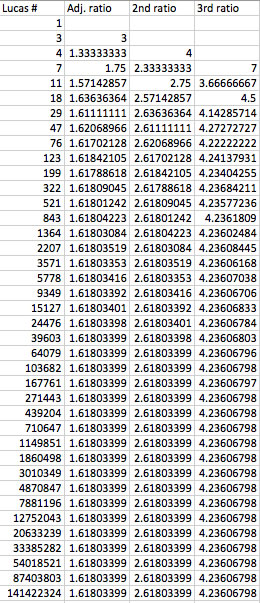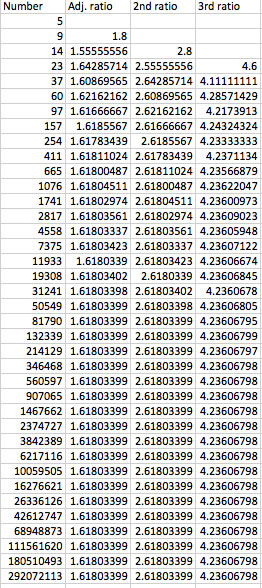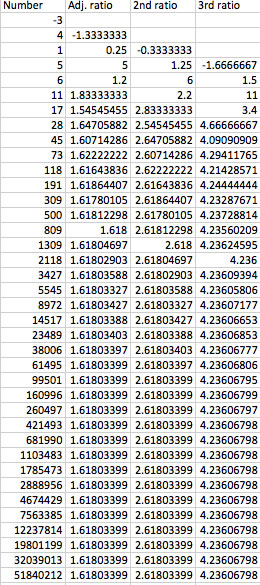

Alex Szatkowski
The Fibonnaci sequence can be easily generated using excel. Here are the first 40 terms in the sequence.

We could use the recurssive definition of the Fibinnaci sequence to determine any value, if given the previous two terms.
f(n) = f(n-1) + f(n-2)
Let see what happens when we take the ratio of each pair of adjacent terms.

It appears that the value of the ratio approaches 1.61803399. This number must be significant, and if fact it is. This is the golden ratio: 
What about the ratio of every second term?

Similar to our first ratio, this ratio appears to converge on the number 2.61803399. This number can also be represented as the square of the golden ratio. 
I predict that when we take the ratio of ever three terms, our value will converge on  .
.
Lets check!

My predictions were correct.
In general, the ratio of every nth term will converge at 
What if we did not start with f(0)=0 and f(1)=1? Will our ratios still converge on the same values?
Here is the Lucas sequence, where f(0)=1 and f(1)=3

Just as we saw with the Fibonnaci sequence, the Lucas sequence ratio values converge on powers of the golden ratio.
What about starting at two arbitrary numbers? Not part of a defined sequence, will the ratios stay the same?

Here I let f(0)= 5 and f(1)= 9. Again, we see the ratios converging at the same values. In this case, it actually converges more quickly then in the two previous sequences.
What about if we began with a number less than zero? Will the ratios stay the same?

Yes, we see the same convergence.
In conclusion, regardless of what f(0) and f(1) equal, the following table is true.
| Ratio | Value ratio converges to |
| Adjacent terms |  |
| Every second term |  |
| Every third term |  |
| Every nth term |  |